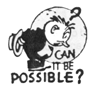|

This story was published in Radio Recall, the journal of the Metropolitan Washington Old-Time Radio Club, published six times per year.
Click here to return to the index of selected articles.
|
|
 
ASK THE EXPERT...
Our expert in this issue is Stephen A. Kallis, Jr., pilot, film producer, and OTR author of Radio's Captain Midnight.
(From Radio Recall, June 2005)
QUESTION: One of our patrons has asked us about his 7” record of Captain Midnight, which says on the outside: “Use your Captain Midnight code-o-graph to translate this secret squadron message.” Is this record from the comics, the radio show, or just an item sold in a record store? (L. Drake, Fresno County Public Library)
ANSWER: The record in question is part of a Years To Remember set produced by the Longines Symphonette Society in the early 1970s. The kit elements are a rather puzzling amalgam of various versions of Captain Midnight.
To provide perspective, I'll supply a brief thumbnail of the various Captain Midnight versions. The original was a radio serial. It started in 1938 as a syndicated program from Skelly Oil, where it was revealed that the character was an aviator who became something of an amateur "crime" fighter. In the Fall of 1940, Ovaltine picked up sponsorship.
The show changed, with the title character recruited to head a Government-supported paramilitary organization known as the Secret Squadron. The organization was formed to fight sabotage and espionage, of which there was plenty before Pearl Harbor. The program produced a yearly cryptological premium called the Code-O-Graph, that identified the owner as a member of the Secret Squadron. [Materials shortages prevented manufacture of 1943 and 1944 models.]
At least once a week, the show's announcer broadcast a cipher message that gave a slight preview to the following show. The program ran as a serial until the Spring of 1949. In the Fall of that year, a few half-hour, complete-story, program aired, but it was dumbed down and lasted through the middle of December.
In 1942, a Captain Midnight newspaper comic strip was introduced. It was drawn in a Caniff-like style, and was extremely close to the radio show, though with different stories. Also, in 1942, Fawcett Comics introduced a comic-book Captain Midnight. This version was significantly different from the radio or comic-strip versions. The Fawcett hero traded his uniform for a standard superhero costume (skin-tight uniform with logo, etc.), was "an inventor," and had no Secret Squadron. It wasn't even close to the radio show. The Fawcett "Captain Midnight" was a retread of another Fawcett character, Spy Smasher. The Fawcett Captain Midnight had a "gliderchute" built into his costume rather than a parachute, that enabled him to "fly" much like a Flying Squirrel.
And even again in 1942, there was a Captain Midnight [Columbia Pictures] movie serial. That Captain Midnight variant was a secret identity. It had a little more relation to the radio show, but it was far afield.
Finally, in 1951, there was a radically different television show that was far different from the radio show (e.g., "Secret Squadron was abbreviated "SS"; in the TV show, "SQ," on the radio, it was a paramilitary force; in the TV show, a "private" organization, etc.,)
The picture on the record sleeve is the comic-book Captain Midnight. The record is a recording of one of the radio shows. The "Code-O-Graph" supplied with the kit was a color photograph on punch-out cardboard, and it could be used to decipher the message. But the original Photo-Matic Code-O-Graph was composed of brass and was adjustable, which the photo isn't.
Many of the World War II Captain Midnight program's main stories can be found in my book, Radio's Captain Midnight: The Wartime Biography (McFarland & Company, 2000; ISBN 0-7864-0621-8) which has just gone into its second printing.
|